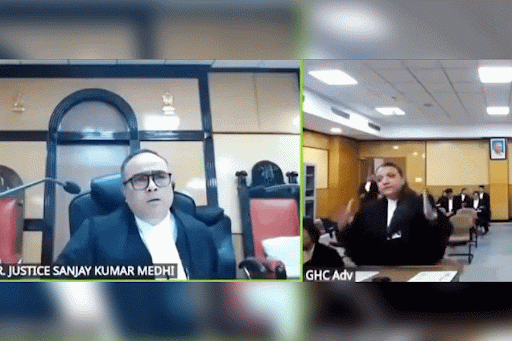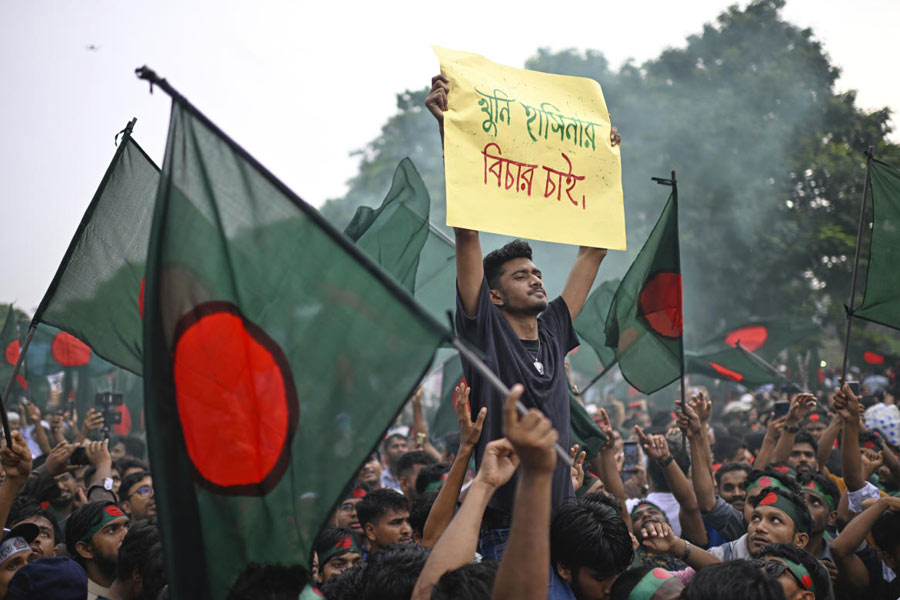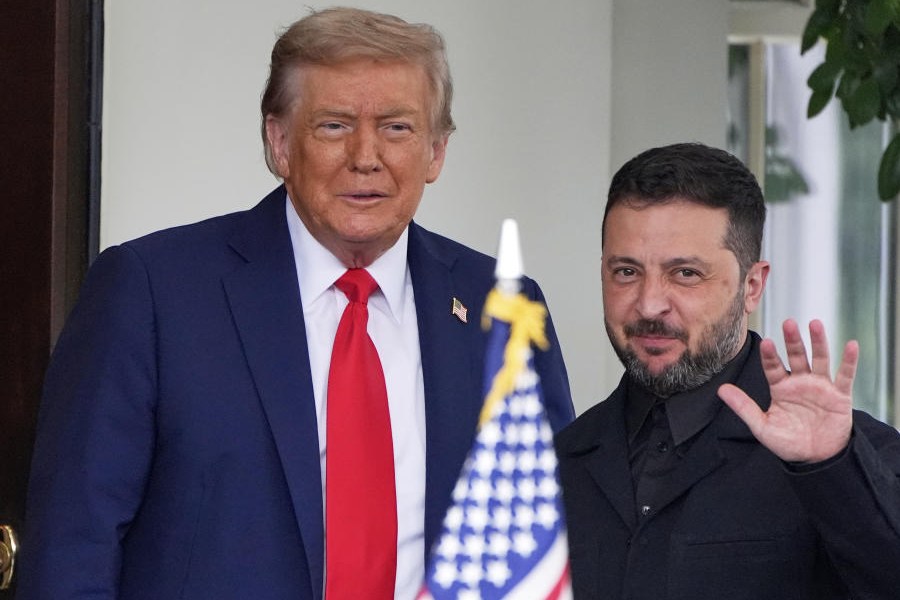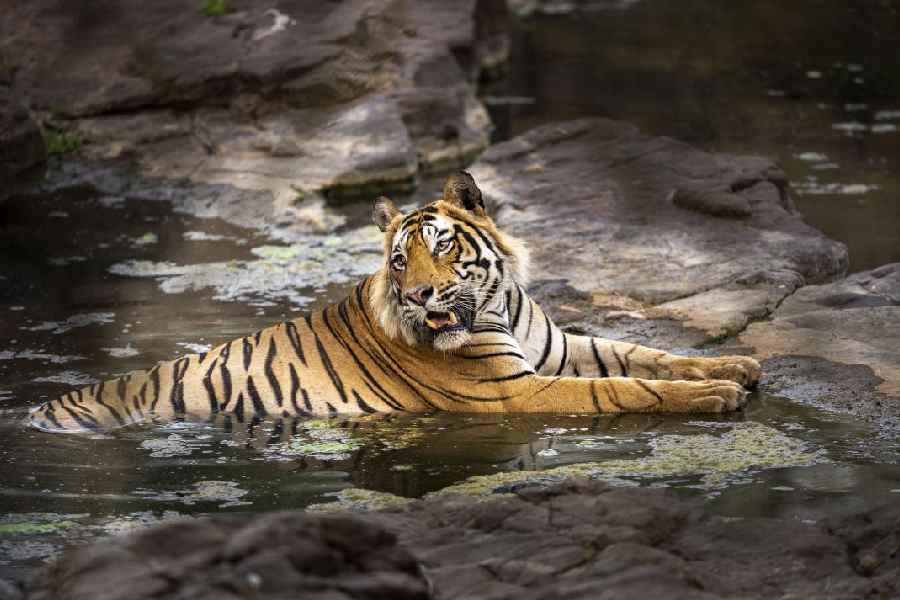 |
There’s a treat in store for fans of the Bengal School and Bengal Modernists. Auction house Sotheby’s is serving up a treasure trove of art by the Bengal masters in its Spring sale of Modern and Contemporary South Asian Art on March 19 in New York. As many as 19 works by 18 artists will go under the hammer, including works by painter Nikhil Biswas, sculptors Chintamoni Kar and Prodosh Dasgupta and also by masters like Ramkinkar Baij and Bikash Bhattacharjee.
Would you like to bid for a stunning oil-on-canvas of a winsome beauty lost in reverie by the late 19th-century portraitist Hemen Mazumdar, which carries a reserve price of $40,000 to $60,000? Or there’s the ethereal dusk landscape ($16,000-$20,000) by Jamini Prakash Gangooly, one of the most feted Indian salon artists of his day.
“India has a very broad history of Modernism but for a long time, the Progressive Artists Group, because of their proximity to collectors in Delhi and Mumbai, has dominated the space. We’re the first auction house to provide a platform for the art from Bengal in a concerted manner. We felt that it was important to bring the spotlight to this part of our modernist art history,” says Priyanka Mathew, specialist head of sale, Modern and Contemporary art, department of Indian and Southeast Asian Art, Sotheby’s.
Bengal’s the flavour of the art season back home too. At least three major shows on in Delhi currently — which will travel to Mumbai, Bangalore and Calcutta — are spurring the interest. There’s the huge The Art of Bengal show at Delhi Art Gallery (DAG), which has over 400 works by 104 artists ranging from the Kalighat Pats to the Bengal School led by Abanindranath Tagore to Modernist masters like Somnath Hore.
“There’s a surge in interest in collecting art from Bengal and we’ve sold a lot of pictures,” says Ashish Anand, director, DAG.
 |
Hop across to Delhi’s National Gallery of Modern Art (NGMA) and you can feast your eyes on the retrospective of renowned sculptor Ramkinkar Baij. Nearly 350 works by the Santiniketan artist in- cluding digital blow-ups of his famed large cement sculptures like the Santhal Family (which couldn’t be moved from Kalabhavan) are on show. Baij’s erstwhile student and leading sculptor K. S. Radhakrishnan, who has curated the show, says: “Ramkinkar was the first Modern Indian sculptor.”
Meanwhile, at the Lalit Kala Akademi, another Bengal connection is playing out with The Wonder of It All, a Sakti Burman retrospective. Burman, who has lived in France where he evolved his own distinctive style with his dream-like works and marbelised or weathered fresco technique, isn’t really a Bengal Modernist. Yet the emotional connect with Bengal is strong.
What’s prompting this growing interest? Well, Bengal was the pre-eminent art centre in the early 20th century and Bengal’s artists were also the first to develop an “Indian modern idiom”, as Sotheby’s notes.
Mathew says that while there’s a developed market for the Progressives like M F Husain, F N Souza and S. H. Raza, the Bengal artists have been undervalued so far. For instance, Husain, Souza, Raza and even others like Tyeb Mehta and Akbar Padamsee belong to the $1 million-plus club on auction prices. In contrast, none of the Bengal artists have breached this mark.
“Compared to the more renowned Modernists, there’s a huge discrepancy in the price points of the Bengal artists. This offers a real opportunity for building meaningful collections of art,” says Mathew.
 |
 |
Adds Anand: “There’s no reason why a (Ganesh) Pyne should sell for less than a Raza.”
The DAG show, which moves to Calcutta in April, covers over 150 years of Bengal art. And the prices range from Rs 35,000 for Haren Das’ prints to Rs 5 crore for a rare Tagore sculpture by Baij. “Indians are looking for a more extensive representation of Indian art whether it’s from Bengal or Baroda,” says Kishore Singh, head, exhibitions and publications, DAG.
It isn’t the gallerists alone who are promoting Bengal art. Deepanjana D. Klein, specialist head of sale, South Asian Modern and Contemporary Art, Christie’s, traces the interest to the growing scholarship, starting from the 2008 Nandalal Bose exhibition in San Diego and Philadelphia to the 150th year art exhibitions on Rabindranath Tagore, and publications like Professor Siva Kumar’s five-volume book on Tagore.
“All these scholarly efforts in recent years have enabled the art community to revisit the artists from Bengal and embrace the brilliance the field has to offer,” says Klein.
Christie’s March 21 auction of South Asian Modern and Contemporary Art will also feature two works by Benode Bihari Mukherjee and several “iconic examples” of auction-favourite Jamini Roy like Untitled (Mother and Child) priced at $20,000-$30,000.
The Baij retrospective, which will travel to the NGMA in Mumbai and Bangalore, is also contributing to this scholarship. Radhakrishnan, who spent six years with Baij in Santiniketan, says curating the show was a challenge. That’s because Baij never preserved his work, often gifting it away.
 |
So Radhakrishnan spent five years documenting Baij’s work at NGMA and in private collections. He visited Baij’s students from Lucknow to Chennai, unearthing old photographs and went “door to door” meeting collectors too. He has also published six books on Baij and made a documentary on him. “Ramkinkar was an artist of the masses so I want people to understand the man and his contribution,” he says.
Burman, 77, too has been putting together his retrospective with gallerist Sharon Apparao for the last few years. “When you’ve worked for so many years, you want to show all the things you’ve done as an artist,” says Burman. “Saktida’s USP is that he has combined the East and West beautifully in his own style,” adds Apparao.
On show are nearly 250 works starting from Burman’s early watercolours and French landscapes to the period when the Indian influence first began appearing after he visited Khajuraho and Konark on his honeymoon in the 1960s to the more recent works about dream, myth and reality. Burman even bought back several works from auctions like L’enfant de ’au delà — he’d sold it for Rs 10,000 and bought it back for Rs 40 lakh.
While Burman’s art transcends Bengal, he admits that “my childhood in a Bengal village is still implanted in me”. And in a way, it’s all contributing to the growing interest in Bengal art.










